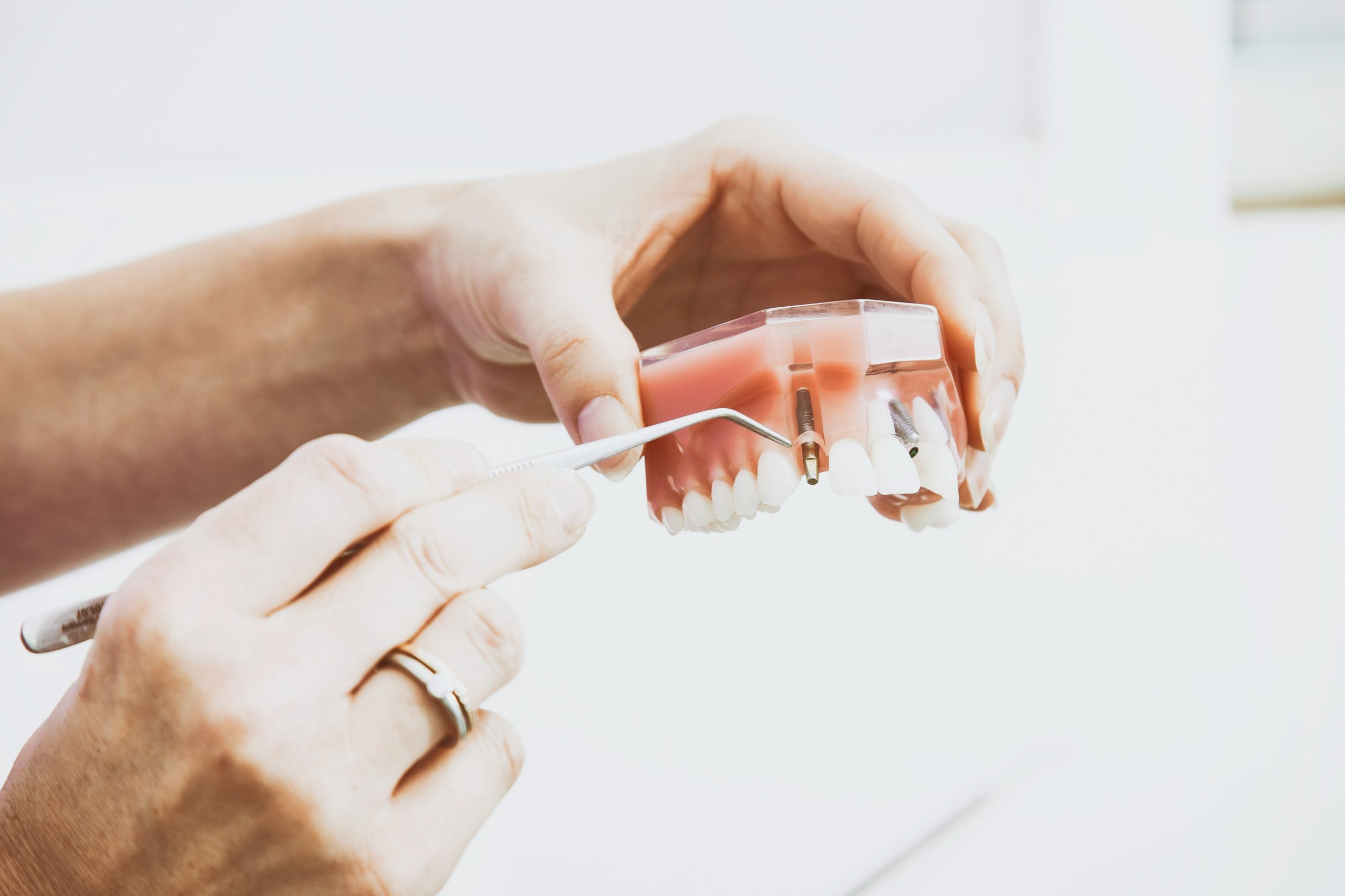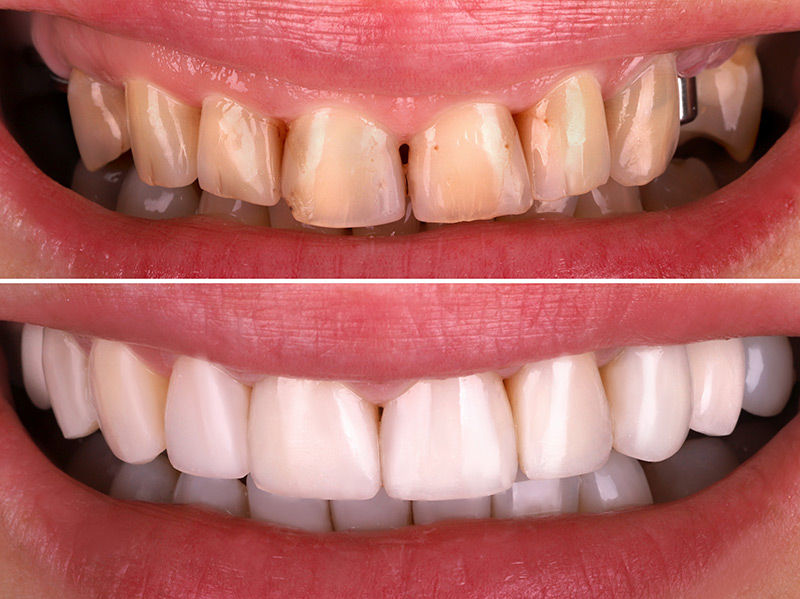Restorative dental care plays a crucial role in maintaining oral health. It involves procedures that restore the function and aesthetics of teeth damaged by decay, disease, or injury.
In this article, we delve into the world of restorative dentistry. We’ll explore common procedures, their purpose, and how they’re performed.
Whether you’re considering a restorative dental procedure or simply seeking to understand more about this field, this guide is for you.
We aim to provide comprehensive information to help you make informed decisions about your dental health.
Join us as we demystify restorative dental procedures, from fillings and crowns to implants and dentures.

Understanding Restorative Dental Care
Restorative dental care, also known as restorative dentistry, is a branch of dentistry focused on restoring the function and appearance of the mouth. It involves diagnosing and managing diseases of the teeth and their supporting structures.
The goal is to rehabilitate the oral cavity to a functional and aesthetic state. This is achieved through various procedures designed to replace missing or damaged teeth, repair tooth structure, and correct issues with bite alignment.
Restorative dental care is not just about fixing problems. It’s also about preventing future dental issues. By restoring the mouth to a healthy state, restorative dentistry can help prevent further decay, disease, or damage.
In essence, restorative dental care is a comprehensive approach to dental health. It combines the science of dentistry with the art of restoration to help patients achieve a healthy, functional, and beautiful smile.
What is Restorative Dentistry?
Restorative dentistry is a term used to describe the process of replacing or repairing damaged or missing teeth. It encompasses a variety of dental procedures, including fillings, crowns, bridges, implants, dentures, and root canal therapy.
These procedures are designed to restore the function and aesthetics of the teeth, allowing patients to eat, speak, and smile with confidence.
The Importance of Restorative Dental Procedures
Restorative dental procedures are essential for maintaining oral health and overall well-being. Damaged or missing teeth can lead to a range of problems, from difficulty eating and speaking to low self-esteem.
By repairing or replacing damaged teeth, restorative dental procedures can improve quality of life, boost self-confidence, and prevent further dental issues. They play a crucial role in ensuring a healthy, functional, and attractive smile.
Common Conditions That Require Restorative Care
Restorative dental care is often required when the teeth are damaged or lost due to various conditions. These conditions can range from common dental issues like tooth decay and cavities to more severe problems like tooth loss and dental injuries.
The goal of restorative care is to treat these conditions, restore the function and appearance of the teeth, and prevent further dental issues. Here are some common conditions that often require restorative dental care:
- Tooth decay and cavities
- Tooth loss
- Dental injuries
Tooth Decay and Cavities
Tooth decay, also known as dental caries, is a common dental problem that can lead to cavities. It occurs when the bacteria in the mouth produce acids that eat away at the tooth enamel. Over time, this can create a hole or cavity in the tooth, which may require a filling or other restorative procedure.
Tooth Loss
Tooth loss can occur due to a variety of reasons, including gum disease, tooth decay, or injury. Losing a tooth can affect the ability to eat and speak properly, and it can also impact the appearance of the smile. Restorative dental procedures like bridges, dentures, or implants can replace missing teeth and restore normal function and aesthetics.
Dental Injuries
Dental injuries, such as chipped, cracked, or broken teeth, can occur due to accidents, sports injuries, or biting on hard objects. Depending on the severity of the injury, different restorative procedures may be needed. These can range from simple fillings or bonding for minor chips to crowns or root canal therapy for more severe damage.
Types of Restorative Dental Procedures
Restorative dentistry encompasses a wide range of procedures designed to repair or replace damaged or missing teeth. These procedures aim to restore the function and aesthetics of the teeth, improving oral health and overall quality of life.
From fillings and crowns to bridges and implants, each procedure serves a unique purpose. Let’s delve into the details of these common restorative dental procedures.
Dental Fillings
Dental fillings are one of the most common restorative procedures. They are used to repair teeth that have been damaged by decay, restoring their normal function and shape.
The process involves removing the decayed tooth material, cleaning the affected area, and then filling the cleaned-out cavity with a filling material. This material can be made from various substances, including gold, porcelain, composite resin, and an amalgam (an alloy of mercury, silver, copper, tin and sometimes zinc).
Regular check-ups can help detect cavities early and prevent further decay. Fillings are a simple and effective way to restore the health of a tooth affected by decay.
Dental Crowns
Dental crowns, also known as caps, are used to entirely cover or “cap” a damaged tooth. Besides strengthening a damaged tooth, a crown can be used to improve its appearance, shape or alignment.
Crowns can be made from several materials, including porcelain, ceramic, metal, or a combination of these. The choice of material often depends on where the crown will be placed, the patient’s preference, the dentist’s recommendation, and cost considerations.
The process of getting a crown usually requires two dental visits. The first involves examining and preparing the tooth, while the second visit involves placement of the permanent crown.
Dental Bridges
Dental bridges are used to replace one or more missing teeth. They span the space where the teeth are missing and are cemented to the natural teeth or implants surrounding the empty space.
These teeth, called abutments, serve as anchors for the bridge. A replacement tooth, called a pontic, is attached to the crowns that cover the abutments.
As with crowns, the choice of material for bridges is influenced by the location of the missing tooth (or teeth), its function, aesthetic considerations and cost.
Dental Implants
Dental implants provide a more permanent solution for replacing missing teeth. An implant is a titanium post that is surgically positioned into the jawbone beneath the gum line, allowing the dentist to mount replacement teeth or a bridge into that area.
Implants offer stability because they fuse to your bone. They also look and feel like natural teeth, making them an attractive option for many patients.
However, not everyone is a candidate for dental implants. Patients must have healthy gums and adequate bone to support the implant.
Dentures
Dentures are removable appliances that can replace missing teeth and help restore your smile. They can be full (replacing all teeth) or partial (replacing some teeth).
Dentures are custom-made in a dental laboratory from impressions taken of your mouth. They can enhance your smile and facial appearance, and improve your ability to eat and speak.
While dentures are a traditional solution for tooth loss, advancements in dentistry have made them more comfortable and natural-looking than ever before.
Root Canal Therapy
Root canal therapy is a treatment used to repair and save a tooth that is badly decayed or infected. During a root canal procedure, the nerve and pulp are removed, and the inside of the tooth is cleaned and sealed.
Without treatment, the tissue surrounding the tooth will become infected and abscesses may form. Despite its reputation, modern root canal treatment is very similar to having a routine filling and can usually be completed in one or two appointments.
Inlays and Onlays
Inlays and onlays are used when old fillings need to be removed or replaced. They are also used when there isn’t enough tooth structure to support a filling, but the tooth isn’t damaged enough to need a crown.
An inlay is similar to a filling and fits inside the cusp tips (top edges) of the tooth. An onlay is more extensive and extends over the cusps of the treated tooth.
Inlays and onlays are made from tough, hard-wearing materials such as porcelain, gold or composite resin, and are made in a dental laboratory before being fitted and bonded into place by your dentist.
Choosing the Right Restorative Dental Procedure
Selecting the right restorative dental procedure is crucial for achieving the best possible outcome. The choice depends on several factors, including the extent of the damage, the location of the tooth, and the patient’s overall health and preferences.
Each restorative procedure has its own benefits and drawbacks. Understanding these can help you make an informed decision about your dental care.
Factors to Consider
When choosing a restorative dental procedure, consider the durability of the treatment. Some options, like dental implants, offer a more permanent solution than others, such as fillings or bridges.
Also, consider the cost. Some procedures may be more expensive upfront but could save money in the long run by preventing further dental issues.
Consulting with a Dental Professional
A dental professional can provide valuable guidance when choosing a restorative dental procedure. They can assess your oral health, discuss your goals and preferences, and recommend the most suitable treatment options.
Remember, the ultimate goal is to restore the function and appearance of your teeth, improving your oral health and quality of life. A consultation with a dental professional is a crucial step in this process.
Maintaining Your Restorative Dental Work
Once you’ve undergone a restorative dental procedure, it’s essential to maintain your dental work properly. This not only ensures the longevity of the restoration but also helps to prevent further dental issues.
Proper care of restorative dental work involves a combination of good oral hygiene practices at home and regular visits to the dentist. Both are crucial for maintaining the health and function of your restored teeth.
Care Tips for Longevity
Good oral hygiene is the cornerstone of maintaining restorative dental work. This includes regular brushing and flossing to remove plaque and prevent tooth decay.
In addition to daily cleaning, it’s important to avoid habits that can damage your restorative work. These include chewing on hard objects, grinding your teeth, and consuming excessive amounts of sugary foods and drinks.
Regular Dental Check-Ups
Regular dental check-ups are vital for maintaining your restorative dental work. During these visits, your dentist can check the condition of your restorations and perform professional cleanings.
These check-ups also allow your dentist to detect and address any potential issues early, before they become more serious. This proactive approach can help to extend the lifespan of your restorative dental work and ensure your ongoing oral health.
Conclusion
Restorative dental procedures play a crucial role in maintaining oral health and overall well-being. They not only restore the function and aesthetics of your teeth but also prevent further dental issues, contributing to a healthier future.
Understanding the various types of restorative dental procedures can help you make informed decisions about your dental care. It’s important to consult with a dental professional to determine the most appropriate treatment for your specific needs.
The Role of Restorative Dentistry in Overall Health
Restorative dentistry is not just about fixing teeth. It’s about restoring oral function, improving aesthetics, and enhancing quality of life.
Moreover, restorative dental care can have a significant impact on overall health. It can prevent oral infections from spreading to other parts of the body and reduce the risk of conditions like heart disease and diabetes.
Embracing a Healthy Dental Future
Embracing a healthy dental future involves taking proactive steps towards maintaining good oral health. This includes regular dental check-ups, good oral hygiene practices, and timely restorative care when needed.
With advancements in restorative dentistry, it’s now possible to restore the function and appearance of your teeth effectively and comfortably. So, don’t let dental issues hold you back. Embrace the possibilities of restorative dental care and enjoy a healthier, brighter smile.









Leave a Reply
You must be logged in to post a comment.